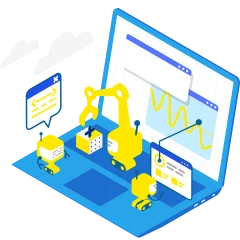“We need more modern engineering!” – Managers and CxOs are referring to certain technologies that are supposed to solve a problem. But what does modern engineering actually mean? In this article, we clarify how to focus on cutting edge and trends without committing to individual technologies in advance just because others are doing the same.
The misunderstandings surrounding modern engineering
In software development, the term is often a buzzword associated with current technologies such as cloud computing and artificial intelligence (AI). The misconception is that modern engineering is based exclusively on the latest technologies. However, this assumption is misleading.
What is modern engineering really?
It is less about the application of a particular technology and more about the application of good software engineering practices – in other words, best practices. It is not about “moving everything to the cloud”, but about the principle of “decoupling”, i.e. the loose coupling of systems. Loose coupling can be (today) the cloud, or microservices or (tomorrow) something completely different.
DevOps and one-piece flow
Another example is the hype surrounding DevOps. The decision for or against DevOps should not be the goal, because you hear it on every corner. It is much more about the “one piece flow” that DevOps inevitably brings with it. After all, the smaller and more comprehensively tested the production code is, the more reliably and quickly features can be monetized.
Why self-restriction is harmful
You should not allow yourself to be limited by current trends or technologies. This type of self-limitation will only ever lead to a dead end, as today’s solutions will always be a transitional and discontinued technology tomorrow.
This can be counteracted with loose coupling between systems. Such systems can be replaced or updated more easily when they become legacy systems.
Conclusion: good practices, no clear rules
It’s simple: modern engineering means the consistent application of good software engineering practices. No more, no less – and there are no fixed rules. It’s not just about the latest technologies per se, but about how these technologies are used within the framework of proven methods.
This ensures that the systems are not only modern, but also future-proof and efficient. In this sense, modern engineering is a guide to sustainable and adaptable software development.






